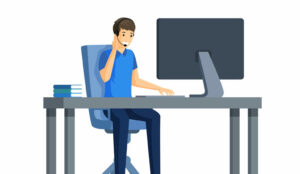Customer-facing call centre workers are one category who have been able, thanks to a combination of cloud technology and powerful equipment like Poly headsets, to maintain something like ‘business as usual’ during lockdowns.
But what will their workday look like, when we finally emerge from lockdowns and restrictions, and everyone is free to return to the office?
Not Every Home Has an Office
Call centre workers are often young employees, who might be living with their parents. We can’t assume they’ve got a decent-sized home with somewhere that’s acoustically and ergonomically good to work dedicated to them.
On the other hand, there will have been companies teetering on the brink of supporting homeworking who now know that it works.
They can trust their employees, the call routing all works… and there are going to be a chunk of the team who don’t like their commute, have wanted to work from home, who are going to have the chance to say look, we’ve proved that it works, and you’ve now got to consider some kind of flexible working.
Indeed, if people are able to make working from home for the first time work right now – with surging demands on their connectivity and service providers, zero preparation and planning, and often with kids and other family members underfoot – then it’s going to be hard to make a business case for it not being an option in the future.
Some kind of hybrid approach will surely be the outcome, taking the learning and best practice from this strange lockdown era into a more flexible and customized way of working for the long term.
The Future Is Flexible

Richard Kenny
We are going to see a divergence in contact centres. The good ones are going to accelerate all the good work they’ve been doing in recent weeks, which is that they’ve been hugely increasing the communication flow from management out to the employees – to make sure people feel supported and less stressed.
And those best-practice exemplars are going to be abandoning coarse numeric KPIs and starting to measure what really matters.
“Why on earth would average handle time be of any use whatsoever?” concluded Richard Kenny, senior product marketing manager at Poly, when people are struggling to work effectively under unprecedented levels of anxiety and uncertainty, and supporting customers in the same situation.
While the economic impact on businesses from the global pandemic will surely be lasting and damaging, a more balanced and flexible approach to how we work, in contact centres and business generally, could be a positive outcome.
Even one which enables businesses ahead in the communication game to have competitive advantage in the ‘post-Covid19 crisis’ landscape, whatever that looks like and whenever we get there.
You can learn from Poly’s best practices for home-based working, and check out the latest hardware offerings to support business continuity.
Author: Guest Author
Published On: 4th Nov 2020 - Last modified: 30th Nov 2020
Read more about - Guest Blogs, Poly















